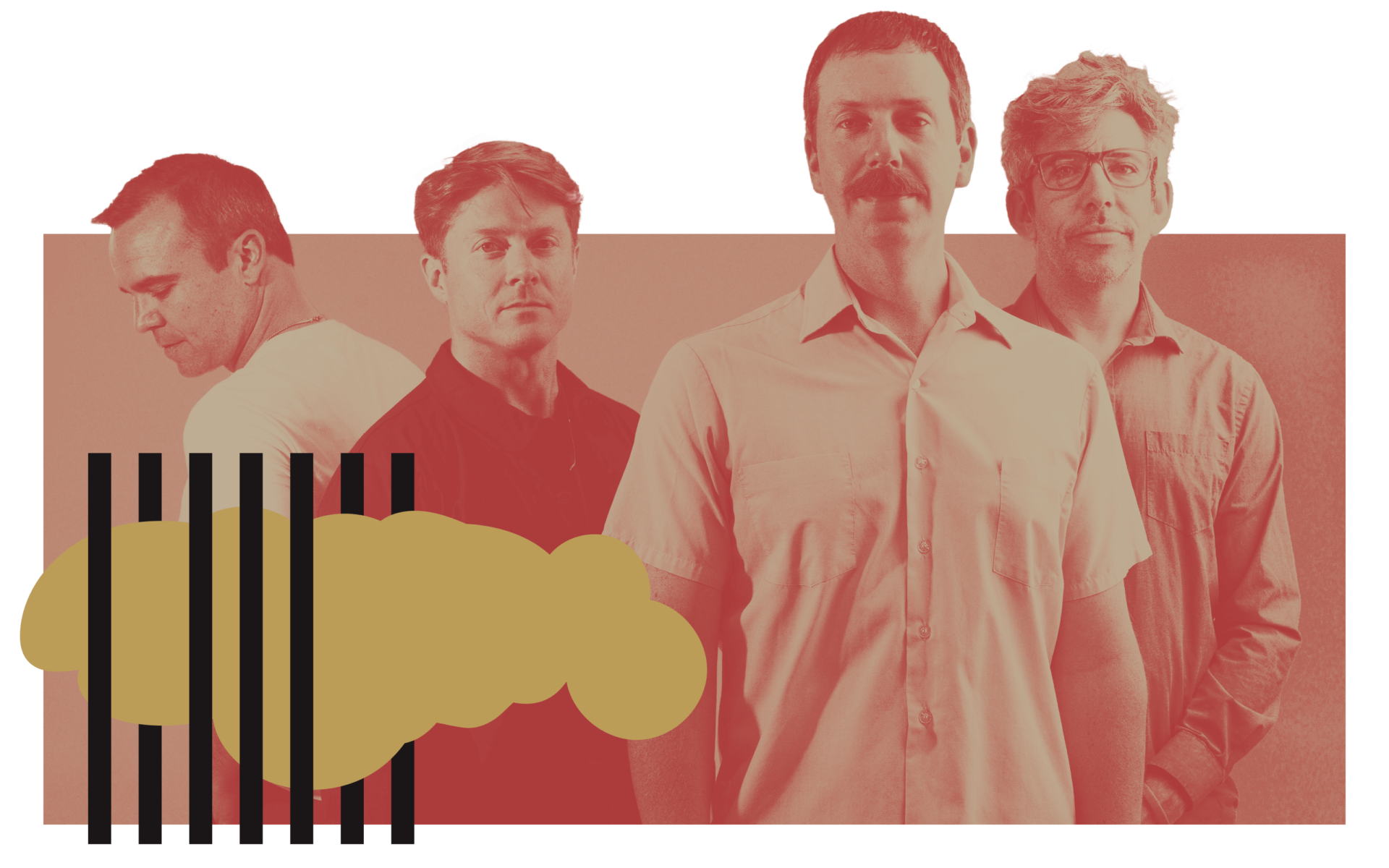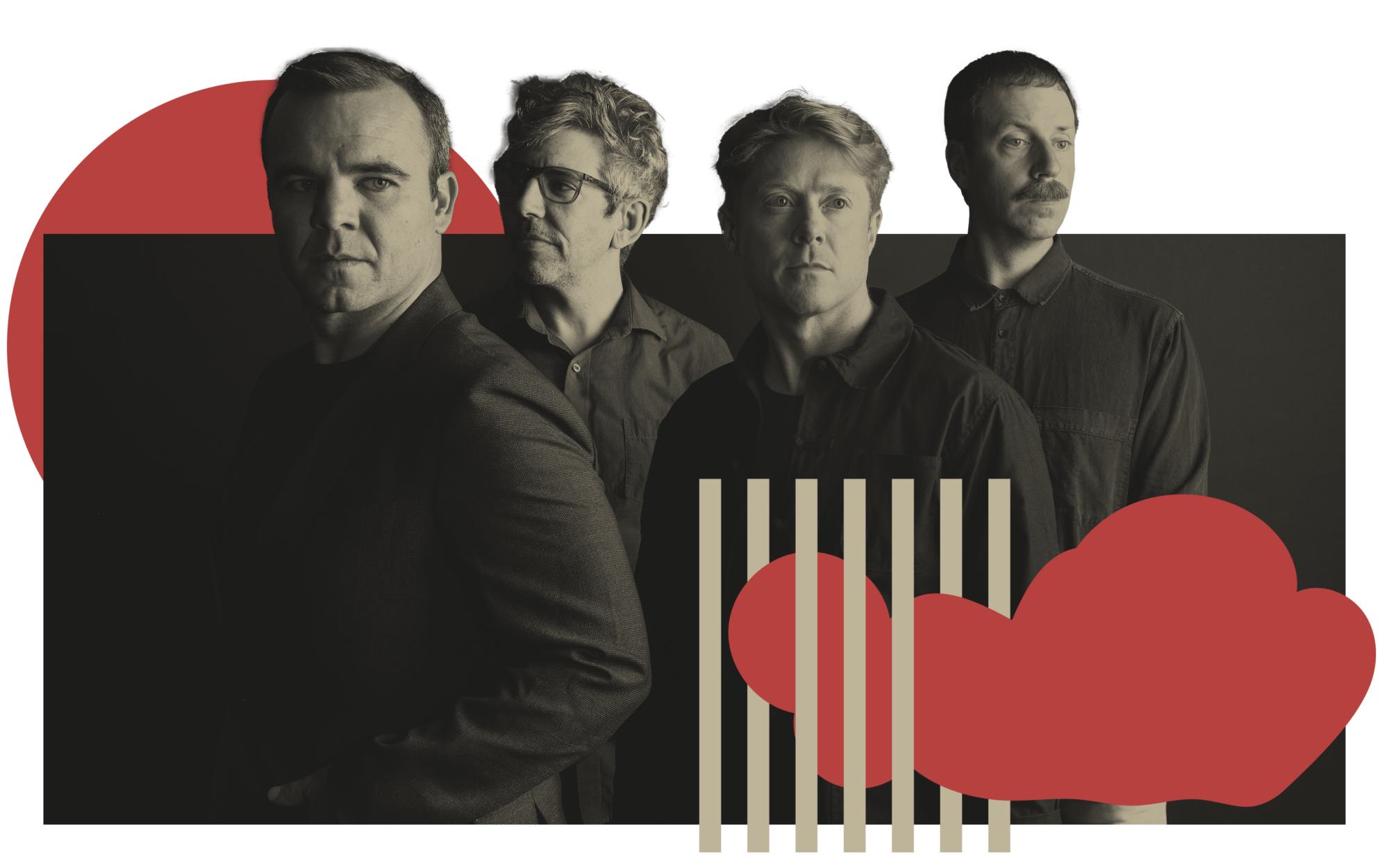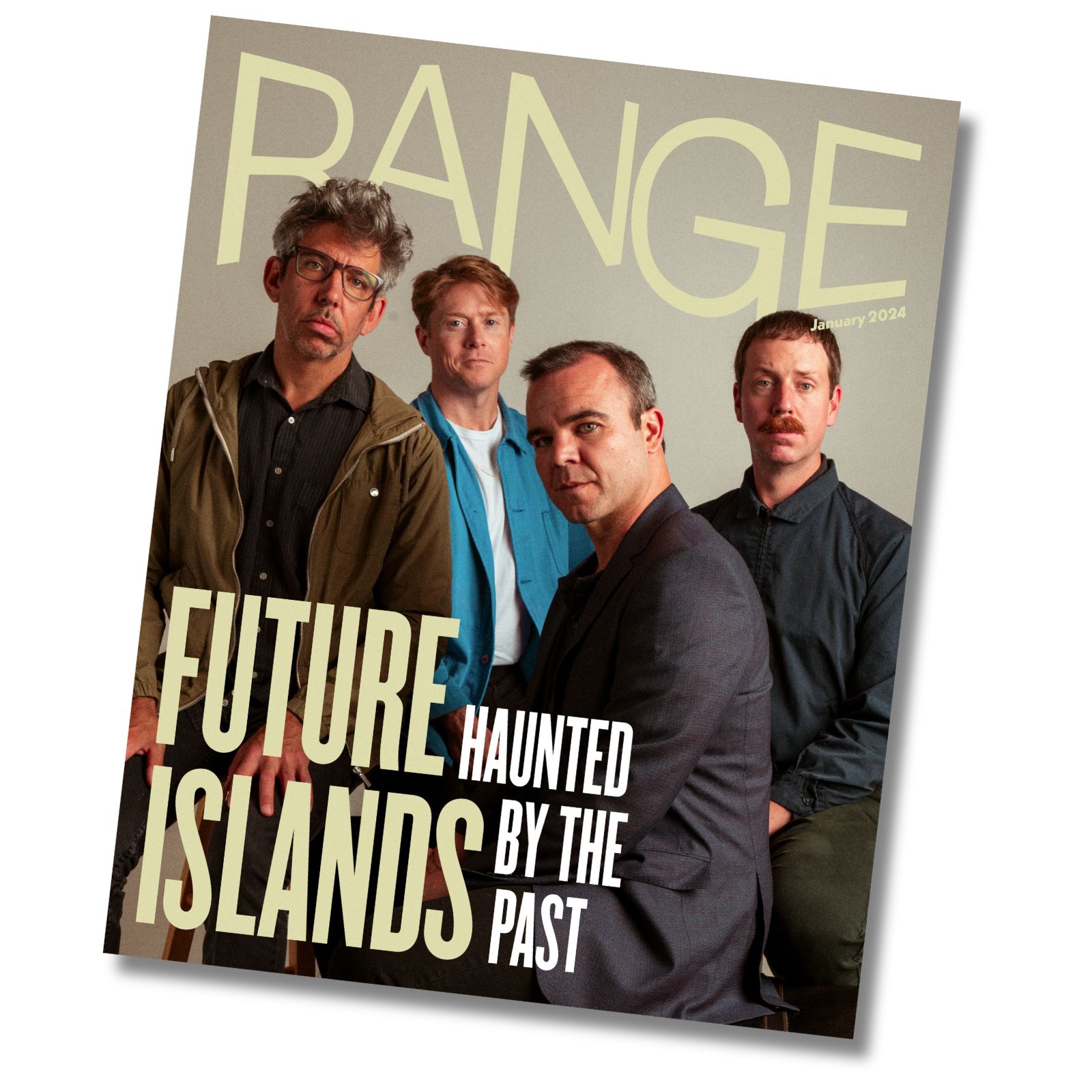By Cam Delisle
In the wake of her breakthrough third album, Through The Wall, the experimental-R&B auteur reflects on a career-defining year.

On the other side of my laptop screen, Sam Herring breaks into a huge grin as he adjusts his microphone settings and reflects on his current sanctuary on the Mississippi River: “Living out of a suitcase feels very normal to me,” he says. “When you tour so much, your idea of home gets broken after a while, and now I feel a lot more at home if I’m anywhere but where my things are.”
The lead singer of Baltimore synth-pop titans Future Islands finds solace in anonymity, appreciating the unique rhythm of lapping waves and passing ships during the relentless press cycle leading up to the release of the band’s forthcoming seventh studio album, People Who Aren’t There Anymore. “There’s a slowness here that allows me to breathe within all of that movement,” he sighs contentedly. “It’s nice to be anonymous and feel like you can just float and bop around through the world.”

As the band approaches its 18th anniversary, we reflect on the journey that started when bassist William Cashion, keyboardist Gerrit Welmers and Herring were just 18 themselves. It was January 2006, and the trio had just disbanded Art Lord & the Self-Portraits, a satirical synth-pop band created among friends to critique the pretentiousness of the art world. Fast forward as they gradually break through the indie scene in Greenville, North Carolina, reintroducing themselves as the newly-forged Future Islands and embarking on a sonic odyssey that spans more than two decades. During that time, they’ve released six studio albums and performed on thousands of stages across the globe: from Coachella to Glastonbury to the iconic live set of marquee track “Seasons (Waiting on You)” on the Late Show with David Letterman, which propelled them to viral stardom in 2014. “It’s something I’m really proud of,” shares Herring, looking back over a storied career with a hint of disbelief. “There’s a part of it that is almost absurd, like ‘How did we do this?’ And it’s really simple… we started and we just didn’t stop.”
Since the cultural outburst of Myspace in the mid-2000s, the band’s journey has spanned the evolution of the music industry, traversing flip-phones and Indie Sleaze all the way through to the rise of global streaming, drip release models and hypermicro-genres of today. Herring acknowledges the loneliness that comes with choosing to persist, and reminisces upon the pain they felt as a band when some of their peers decided to step away from music: “This is probably close to 10 years ago now, when people were getting to 30 and deciding that they couldn’t sustain this music thing. It definitely hurt to see people give in to life and choose other paths,” he admits. “But somewhere in there we just kept going.”
Within this madness, however, the band’s aim remains steadfast and true: “It’s become a reflex to write a song as a way of going through an emotion. Twelve years ago, though, we were only beginning to discover how it helped us, and in turn how it would help others as we toured,” Herring says. “Hearing people say that our music carried them through a time was everything.” Amid the chaos of rapidly shapeshifting trends, algorithmic conglomerates, and the boom of AI technology, Future Islands continue to root themselves in simplicity, striving to connect with their listeners through universal emotions. “People have different associations with, for example, what a sunrise is and what it means. What is the dead of night? When you’re alone, is that a place of peace or a place of fear? These ideas are very simple, but they will attach to people in different ways because of their experiences.”
With Herring’s fervent vocals, Cashion’s rhythmic prowess, Welmers’ synth wizardry and the disco-funk percussion of drummer Michael Lowry (who joined in 2020), Future Islands crafts a theatrical sound that pinballs from indie to soul to alt pop and back, eluding categorization and standing as a testament to the band’s unwavering commitment to sonic exploration. In recounting their legacy of genre nonconformity that stretches from the Art Lord era to the synthy echoes of their first three albums, Herring’s eyes twinkle. “We always called ourselves post-wave because we never really fit in anywhere. Everyone in the band brings such widely different influences.” Laughing, he adds, “I find it so funny, because we’ve actually had people accuse us of sounding too much like ourselves.”

And do they ever. People Who Aren’t There Anymore revels in a growling authenticity, exposing raw, emotional overtones that make up what might be Future Islands’ deepest and most vulnerable recording yet. Although personal storytelling has become second nature for the band, Herring opens up about this project’s delicate balance of alchemizing emotions and respecting their collective nature as a group: “Sharing is an integral part to my–and our–journey as artists. However, it’s a gift as much as a burden,” he says. “It’s a gift in the sense that you have this amazing outlet, but then there are times when you’re curious if you’re sharing too much. What am I saving for myself? Is it wrong to share my story if it’s someone else’s story too? That’s something I didn’t use to be afraid of.” He emphasizes their commitment to channeling the music collectively, acknowledging the profound impact they have on listeners around the world: “We all understand what music can mean, and we strive to create –in an environment, a show, a safe space within an album–a place to put your grievances.”
Herring also opens up about the end of a long-term relationship that inspired many of the lyrics. He reveals that the first half of the album was written while the relationship was slipping away during the pandemic, with the second half delving into the aftermath of its breaking point. Even after all of Herring’s decades of emotional outpouring, there are still certain things that take a toll on him. “There’s a part of me that wonders if I can keep doing this. Can I keep sharing? And there’s the other side of me that is like, ‘This is who you are.’ Old habits die hard at this point.” Herring pauses and shifts his glance upwards. “It’s strange. When you open your life up to people, it suddenly becomes much larger than you. Your music becomes part of other people’s lives.”

People Who Aren’t There Anymore ultimately becomes an emotionally-charged masterpiece that pulls the veil back on darker facets of grief and nostalgia, carrying listeners through the raw and vulnerable landscapes of life and death among droning synthesizers, high-energy beats and the subtle ticking of mechanical clocks. With lyrics reminiscent of Italo Calvino and Gabriel Garcia Marquez’s magical realism, the album reckons with the crumbling foundations and cycles of loss that come with the passage of time. “This is what we’re trying to give voice to–that you can go right up to the edge but you don’t have to go in. That you can be there and come back. Many things in my life have put me at that edge: drug addiction, depression…” Herring exhales deeply. “Grief will happen again and again, but it is a natural process of life, and nothing to be afraid of. You gain a greater appreciation for light, for joy and happiness, after being at that edge.”
People Who Aren’t There Anymore is out January 26, 2024.

By Cam Delisle
In the wake of her breakthrough third album, Through The Wall, the experimental-R&B auteur reflects on a career-defining year.
By John Divney
Still processing their debut album, Vancouver’s latest art-rock unit proves collaboration is the new rebellion.
By Cam Delisle
The elusive Kevin Parker soundtracks the self-medicated search for bliss on his fifth album, Deadbeat.